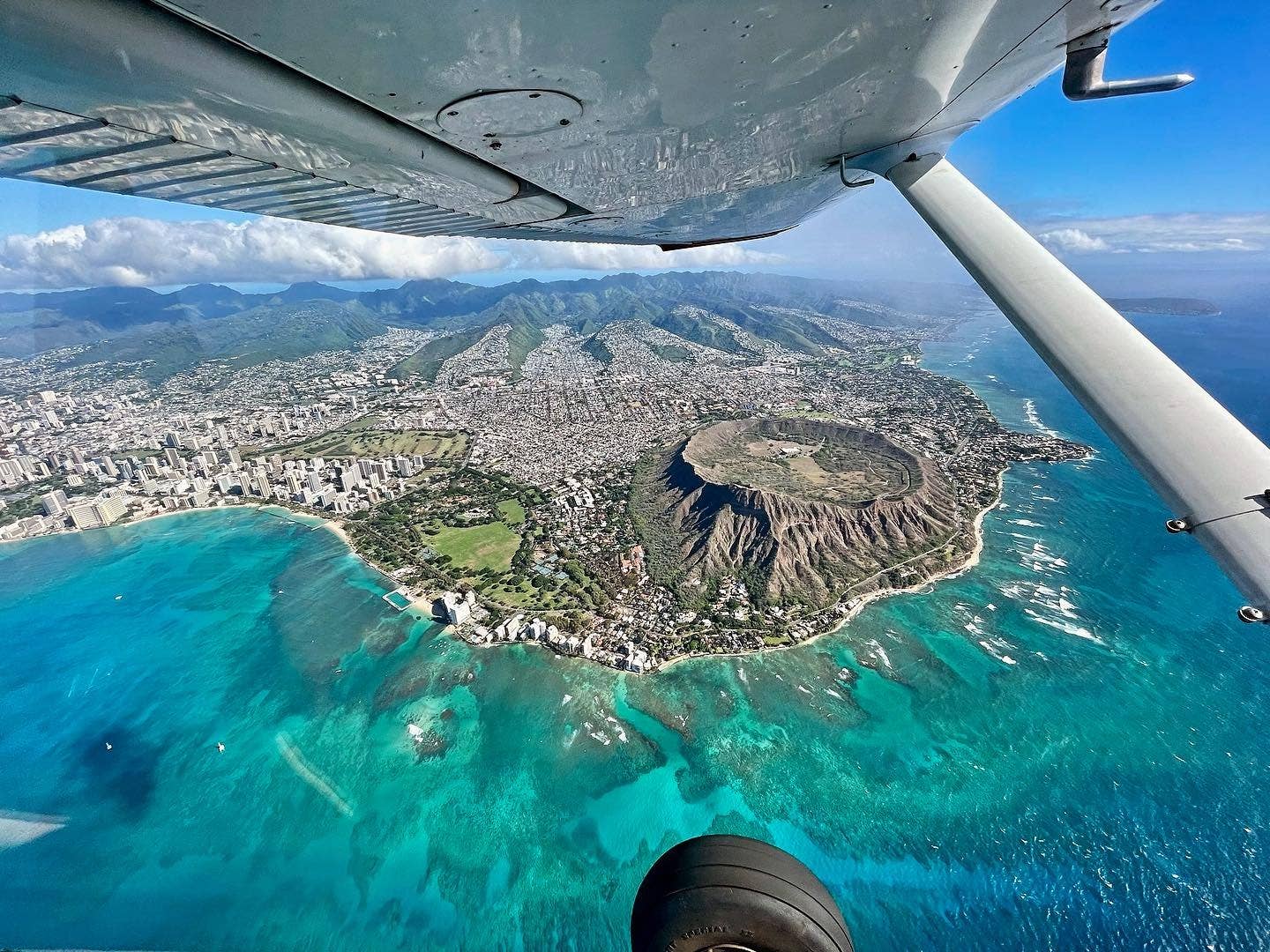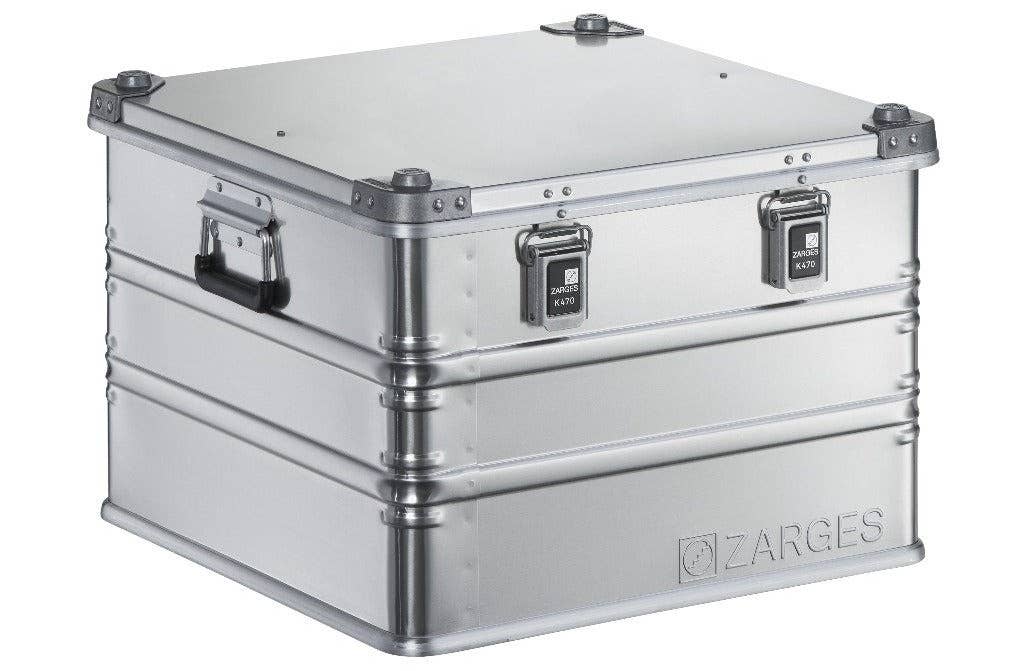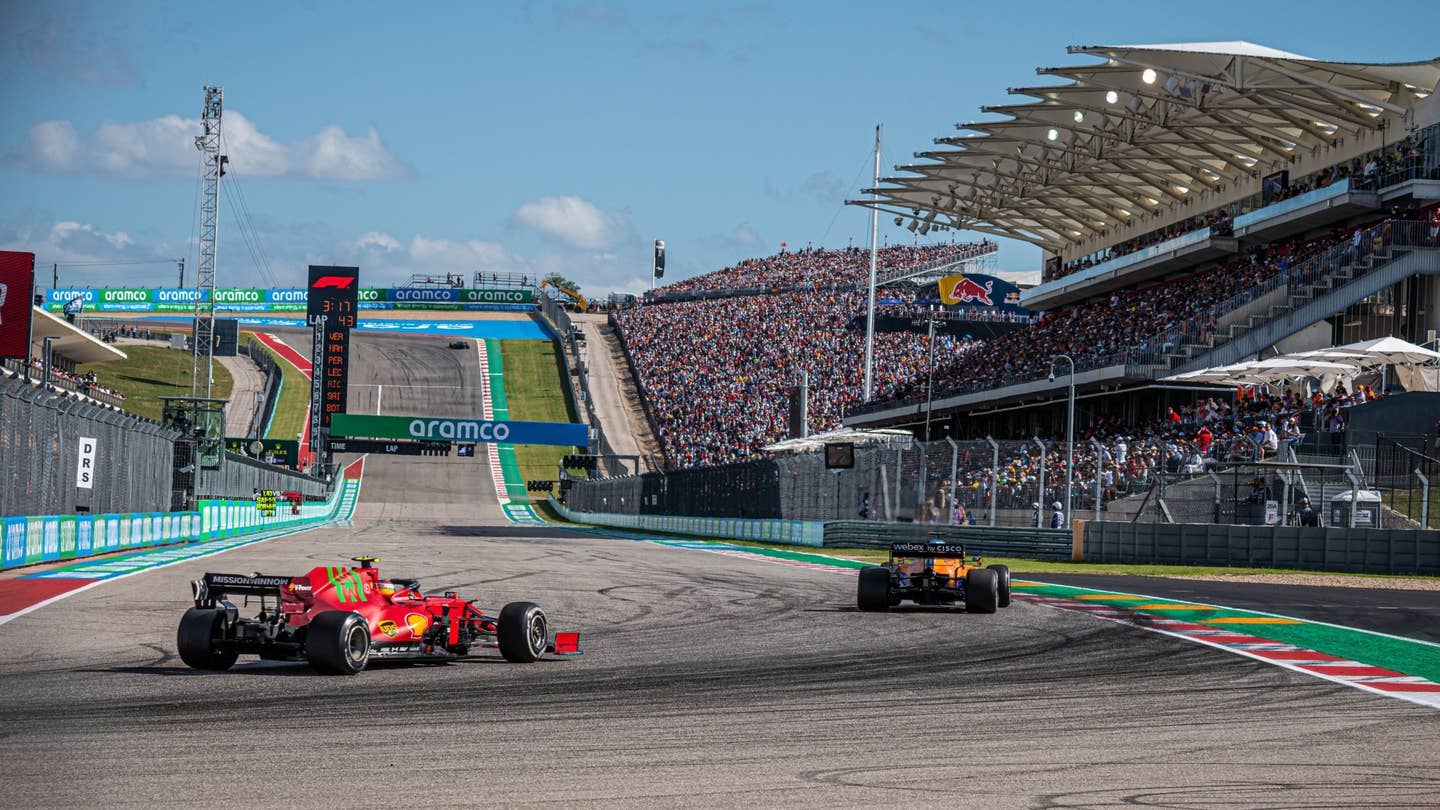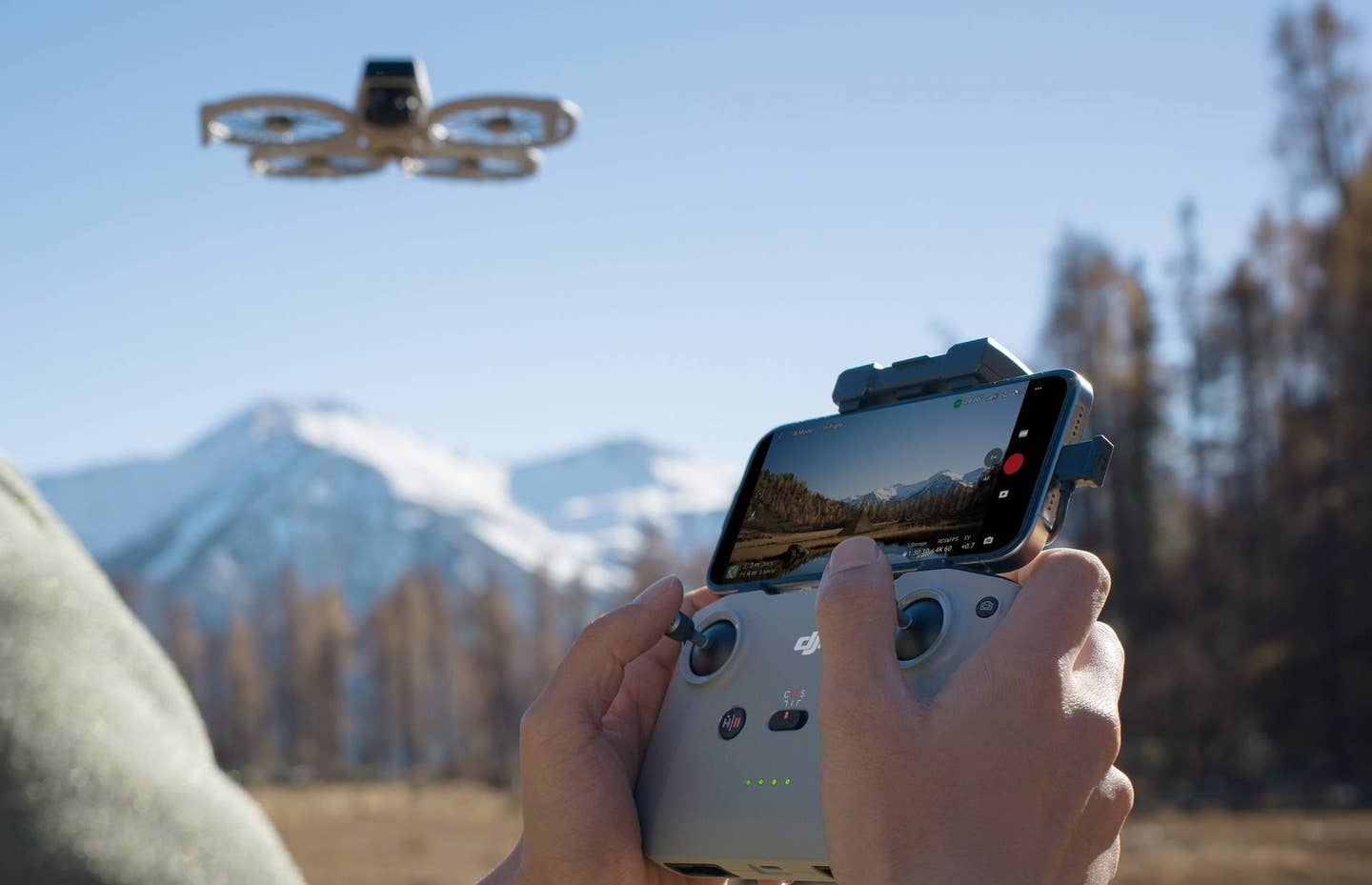Flight School Options in Hawaii
Start your aviation training at one of these top programs in the Aloha State.

The beautiful scenery of Hawaii is one of the perks of training in this region. [Courtesy: Pacific Flight Academy]
Learning to fly is already an adventure, but flight training in Hawaii is next level. Jaw-dropping scenery of the mountains, beaches, volcanoes, and tropical vegetation make this a top destination for tourism.
Conservative estimates state that hundreds of thousands of people take aerial tours in the Aloha State every year.
While there are many good programs in Hawaii from which to choose, we highlighted five for their variety of offerings to meet the different objectives of aspiring pilots. When you’re ready to start learning how to become a pilot in Hawaii, put these schools at the top of your list.
Quick Look: Best Flight Schools in Hawaii
- Barbers Point Flight School
- Mauna Loa Helicopters
- Tropicbird Flight Service
- Pacific Flight Academy
- Lani Lea Flight School
Barbers Point Flight School
On the island of Oahu and located under Honolulu’s Class B airspace, Barbers Point is one of the most in-demand flight schools in Hawaii. To become a student here, you’ll have to get on a waitlist, but from what reviewers online are saying, it’s worth the wait. Newer aircraft with advanced avionics make this school a standout.
Thankfully for those on the waitlist, Barbers Point works hard to keep the line moving. They say they “cannot keep students who aren’t serious enough because too many candidates are patiently on our wait list and eager to begin their own training.” If you do secure a spot on their training roster, be prepared to put in the work.
Location: Kapolei (Kalaeloa Airport - PHJR)
Tuition and fees:
- Aircraft rental rates range from $210 to $246 per hour.
- Flight Instructor: $65/hr
- Ground Instruction: $40/hr
- Flight Simulator: $110/hr
Financial assistance: No
Accreditation: No
Program length: Custom scheduling allows students to complete the program at their own pace.
Training offered:
- Private Pilot ASEL
- Instrument Rating
- Commercial Pilot ASEL
Fleet: Cessna 150, Cessna 172
Job placement: No
Virtual learning: No
Mauna Loa Helicopters
There’s no better place to be a helicopter pilot than Hawaii, and the best helo school on the islands is Mauna Loa Helicopters. While the Part 141 operation specializes in helicopter training, Mauna Loa also offers Part 61 fixed-wing training from Private Pilot to Multi-Engine Flight Instructor.
For aspiring pilots coming from outside of the U.S., Mauna Loa offers the I-20 for international students. Housing is also available for students at the Kona location. With two locations and a wide range of pilot training opportunities, Mauna Loa is a premium location for learning to fly in Hawaii.
Locations:
- Oahu - Honolulu (Daniel K. Inouye International Airport - PHNL)
- Hawaii - Kona (Kona International Airport - PHKO)
Tuition and fees:
Helicopter
- Professional Helicopter Pilot Program (zero to MEI): $96,039
- Private, Instrument, and Commercial Rotorcraft: $61,810
- Private Pilot Rotorcraft: $16,342
Fixed Wing
- Private Pilot ASEL: $9,200
- Instrument: $11,250
- Commercial Pilot ASEL: $35,470
- Multi-Engine Add-on: $8,025
- Certificated Flight Instructor: $7,745
- Certificated Flight Instructor-Instrument: $4,170
- Multi-Engine Instructor: $13,110
Financial assistance: Yes. Various financing options, including federal aid, private loans, and scholarship opportunities, are detailed on the website.
Accreditation: Yes. Mauna Loa is a Part 141 school accredited by the Accrediting Commission of Career Schools and Colleges (ACCSC) since 2009.
Program length: 10-18 months total from Private Pilot through Multi-Engine Instructor.
Training offered:
Fixed Wing, Part 61
- Private Pilot ASEL
- Instrument Rating
- Commercial Pilot ASEL
- Multi-Engine Commercial Add-on
- Certificated Flight Instructor (CFI)
- Certificated Flight Instructor-Instrument (CFII)
- Certificated Flight Instructor-Airplane Multi-Engine (MEI)
Rotorcraft, Part 141
- Private Pilot
- Instrument Rating
- Commercial Pilot
- Certificated Flight Instructor (CFI)
- Certificated Flight Instructor - Instrument (CFII)
Fleet: Robinson R22, R44, R66, Cessna 172N, Piper Arrow, Piper Seneca II
Job placement: No
Virtual learning: No
Tropicbird Flight Service
Based on the “Big Island” of Hawaii, Tropicbird Flight Service offers a range of flight training programs in Kailua-Kona. Tropicbird conducts flight training at all levels and even offers opportunities for two- and four-year college degrees in partnership with Utah Valley University. Experienced pilots can even book an Island Adventure Course and experience flying around the tropical conditions of the islands.
With a well-maintained fleet, Tropicbird provides a memorable and effective training experience for students of all skill levels.
Location: Kona (Kona International Airport - PHKO)
Tuition and fees:
- Private Pilot ASEL: $19,400
- Instrument Rating: $20,850
- Commercial Pilot ASEL: $13,600
- Flight Instructor: $11,850
Financial assistance: None for flight training, but students who enroll in the online degree program through Utah Valley University can be eligible for federal aid to assist with tuition and living expenses.
Accreditation: No
Program length: Custom scheduling allows students to complete the program at their own pace.
Training offered:
- Private Pilot ASEL
- Instrument Rating
- Commercial Pilot ASEL
- Certificated Flight Instructor (CFI)
- Certificated Flight Instructor Instrument (CFII)
- Airline Transport Pilot (ATP)
Fleet: Diamond DA20, Cessna 172, 182
Job placement: No
Virtual learning: Yes. Tropicbird is affiliated with the Utah Valley University aviation degree. Students training at Tropicbird in Kona can apply for admission with the university and complete a bachelor’s or associate degree online.
Pacific Flight Academy
Inside Honolulu’s busy Class B airspace, Pacific Flight Academy operates a Professional Pilot Program designed to guide students from zero to instructor. Flight students here train in some of the country’s most complex airspace, gaining invaluable experience for their future careers.
The academy can offer competitive pricing through a flying club structure with lower rental rates for members. With financing options and guaranteed job placement following training, Pacific Flight Academy is structured perfectly for those with airline aspirations.
Location: Honolulu (Daniel K. Inouye International Airport - PHNL)
Tuition and fees:
- Aircraft rental rates vary depending on the aircraft and the student’s membership status. For members enrolled in the Professional Pilot Program, rental fees range from $140 to $180 per hour for single-engine aircraft.
- The multiengine aircraft rents for $380 per hour for members.
- Flight instruction costs $55 per hour for single-engine flight and ground instruction, and $65 per hour for multiengine instruction.
Financial assistance: Yes. Pacific Flight partners with Meritize to provide career track students with financing options.
Accreditation: No
Program length: The Professional Pilot Program takes an estimated nine to 12 months to complete.
Training offered:
- Private Pilot ASEL
- Instrument Rating
- Commercial Pilot ASEL
- Multi-Engine Rating
- Certificated Flight Instructor (CFI)
- Certificated Flight Instructor Instrument (CFII)
- Multi-Engine Instructor (MEI)
Fleet: Cessna 150, 172, Beechcraft Travel Air D95A
Job placement: Yes. Students who complete the Professional Pilot Program are guaranteed a job as an instructor at the school.
Virtual learning: No
Lani Lea Flight School
Low-cost training in Hawaii is hard to find, but Lani Lea Flight School offers unbeatable prices. While the school doesn’t offer a career program for aspiring professional pilots, it specializes in flexible and affordable training on Oahu.
Additionally, training at an airport as large as Honolulu International offers a uniquely challenging experience for student pilots. Talking to tower and ground at a busy Class B isn’t something that most private pilots get to do, but the practice is incredibly valuable. For those just getting started with flying and looking to get their feet wet, Lani Lea is an excellent choice.
Location: Honolulu (Daniel K. Inouye International Airport - PHNL)
Tuition and fees: For Private Pilot training, it is estimated students will spend between $8,000 and $10,000.
Financial assistance: No
Accreditation: No
Program length: Training is scheduled based on student availability, with flexible hours seven days a week. Program duration is based on the individual student’s goals and progress.
Training offered:
- Private Pilot ASEL
- Biennial Flight Reviews
- Instrument Proficiency Checks
Fleet: Cessna 150, 172, 182
Job placement: No
Virtual learning: Yes. The school recommends online ground programs such as Pilot Institute and Sporty's.
Considerations to Make About Flight Training in Hawaii
If you’re just starting training or going back to flight school after a break, consider these factors when choosing a program.
Flying conditions
Weather in Hawaii is consistently warm and pleasant year-round. Because the terrain is mountainous and surrounded by ocean, winds can be strong and variable. Pilots training in Hawaii will get their fair share of mountain flying, busy airspace, and crosswind practice.
Cost of living
Because Hawaii is small and geographically isolated, many goods that are commonly available on the U.S. mainland are rare and expensive there. This makes the cost of living quite high across the islands, and translates to a higher cost of flight training. For the aspiring pilot who is prioritizing low-cost training, Hawaii may be out of budget. But for the adventurous pilot with deeper pockets, the Aloha State offers an unforgettable training experience.
Job opportunities
The extraordinary landscape and incredible year-round weather make Hawaii an ideal place to fly. Because of the limited space and mountainous terrain, helicopter jobs dominate the space, although fixed-wing posts can still be found here.
Tourism is Hawaii’s largest industry, and helicopter tours can be found on just about every island. Rotorcraft jobs are also heavily represented in emergency services, such as search and rescue, firefighting, and medical transport.
Other pilot job opportunities in Hawaii can be found with small passenger airlines or cargo carriers who operate interisland flights between the major Hawaiian islands. Some larger airlines even operate international pilot bases out of Hawaii.
Keep in mind that while there are pilot job opportunities to be found in Hawaii, the desirable location makes for a competitive market.
Want some help from experts? FLYING has teamed up with Flycore to provide a flight school matching service. The team at Flycore are pilots and instructors, and have taught hundreds of students over the years, from casual pilots to airline professionals to private aviation pilots. Click here to learn more.
Now that you have a better idea of what good flight schools are in your area, check out this guide to what gear you should pick up as a new or rusty pilot.
FAQ
How much does it cost to become a pilot in Hawaii?
Costs for flight training in Hawaii are higher than in other places due to less availability of materials and an overall higher cost of living. Aspiring pilots in Hawaii should be prepared to spend two to three times more on their training than what is typical on the mainland U.S.
How long is flight school in Hawaii?
The length of time of any flight training program will vary with factors like weather, aircraft and instructor availability, and the student’s own availability. Flight training can be completed in a matter of months or years, depending on individual circumstances.
Is Hawaii good for flight training?
Flight training in Hawaii offers incredible views, consistently good weather, and a variety of training programs to choose from. Due to the high cost of living in the Hawaiian Islands compared to the mainland U.S., flight training costs may be higher there than in other states.
Does the University of Hawaii have a flight school?
Yes, the University of Hawaii at Hilo offers flight training as part of its four-year professional pilot degree program.

Sign-up for newsletters & special offers!
Get the latest FLYING stories & special offers delivered directly to your inbox






